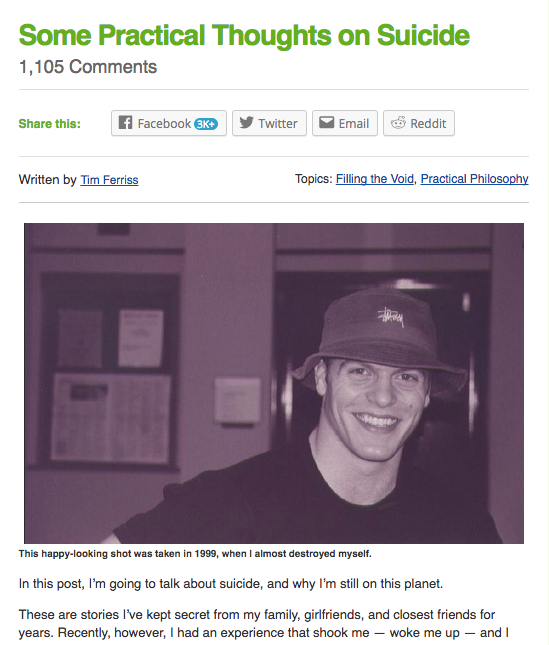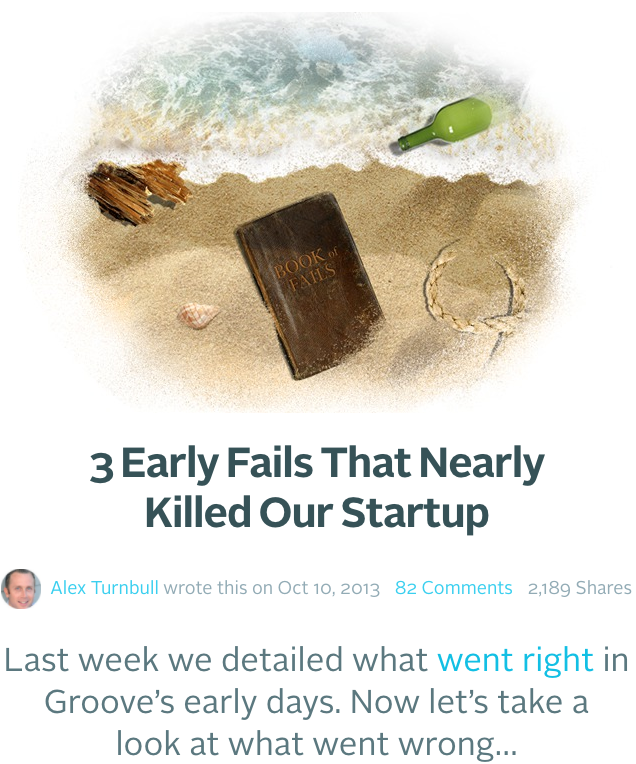What do you think of when you hear the word “vulnerability”?
If you’re like many SaaS founders, you might start by picturing the disastrous consequences of a hacked program.
But the word also refers to the sense of being exposed to a threat in the non-software world — in our businesses and personal lives. We tend to avoid vulnerability as much as we can in those areas, too.
It can be terrifying to feel weak or defenseless, or to think we’re seen that way by others.
That’s why many of us charge through life and business pretending to be bulletproof. After all, aren’t strong leaders supposed to put their emotions aside to get things done?
Actually, there’s evidence to the contrary.
Your attempts to avoid vulnerability can hurt your business by preventing the powerful connections that require a healthy dose of it.
What is vulnerability, exactly?
Social researcher Brené Brown brought the word into the spotlight with her TED talk on the power of vulnerability, which is still in the top 4 viewed TED talks of all time.
In her book “Daring Greatly,” she noted that although most of us equate the word “vulnerability” with weakness, her research showed otherwise.
Asked to describe the times they felt the most vulnerable, people described times when they forged ahead despite great risk. Examples included hiring or firing an employee, and going on a first date after a divorce.
Brown defines vulnerability as “uncertainty, risk and emotional exposure.” There’s no avoiding vulnerability — we all face uncertainty and risk each day. It’s how we choose to cope with feeling vulnerable that matters.
The standard mode of operation in an office setting is to hide our emotions, maintaining a cool exterior and keeping everyone at a professional arm’s length.
Alternatively, we can show courage by engaging with our feelings in an authentic way, admitting that we feel them, and maybe sharing those feelings with others we trust.
Brown’s research confirms that when we choose the second route, we benefit. Here’s why:
The benefits of vulnerable leadership
We humans are really good at ferreting out insincerity in others.
We can also pick up on others’ emotions easily and sometimes subconsciously, as this Harvard Business Review article explains. That’s why attempting to mask or feign emotions almost always comes across as insincere.
And it turns out that people are even more sensitive to hints of disingenuity in their leaders, which means founders have even more at stake in trying to mask their flaws.
As Brown says, “Most of us don’t trust perfect and that’s a good instinct.”
Emotional connection with a boss is associated with a host of benefits in workers, such as more engagement and lower voluntary turnover. But you won’t connect with your employees if they don’t trust you, and trust requires vulnerability.
Authenticity in company culture
As founder, you set an example for acceptable behavior in your company. That means if you aren’t comfortable with feeling vulnerable, your employees won’t be, either. That’s a risk, because vulnerability is essential if you want employees suggest new ideas, try new things, and express passion for their work.
When vulnerability is suppressed, employees may focus on appearing authoritative and burying all evidence of their flaws and mistakes. Toxic by-products of this culture include finger-pointing, politics and favoritism.
Wondering how vulnerable you really are as a business leader? Consider some of the examples of vulnerability in action:
- Admitting you made a mistake
- Admitting you aren’t sure about something
- Asking for help
- Forgiving a colleague who made a mistake
- Showing emotions like sadness, disappointment or fear
- Reaching out to a colleague who is struggling in his personal life
- Trying something again after you’ve failed, perhaps multiple times
These gestures of vulnerability can go a long way, not only within your organization, but beyond it.
Public authenticity and your brand
Just as willingness to be vulnerable helps you connect with employees, public-facing vulnerability helps you connect with potential customers.
These days, authenticity is increasingly valued and expected at a company level. People who feel they can trust you or your company are much more likely to share the insights you need to improve your product.
If others can relate to you or even feel like they “know” you on some level, they’ll recognize your name in their inboxes and open your emails. That makes them more likely to eventually sign on for your services.
Here are a few ways to project vulnerability in your brand:
- Engage with users in an authentic way on social media
- Be transparent and unafraid to apologize when dealing with support issues
- Develop a consistent personal voice throughout company marketing
- Publish a company blog that occasionally shares real, personal or emotional insights
Blogs are especially good places to exercise vulnerability, which is why so many founders have successfully used them to connect with others.
Examples of vulnerable blogging
Here are just a few successful business leaders who have chosen to blog about their personal stories, leaving powerful impressions in the process.
Rand Fishkin

Rand Fishkin founded Moz, a company whose online tools help businesses’ search engine visibility. He established transparency as one of Moz’s core values and has stuck to it consistently. In one blog post, Rand described a year-long battle with depression due to what he perceived as his mistakes in leadership. In the past, he also took to his blog to discuss a venture capital deal that fell apart. It was an unorthodox move that caused some blowback in the VC community, but it ended in his landing an investor who also valued transparency.
Tim Ferriss

Best-selling author and top-ranked podcast host Tim Ferriss knows a thing or two about business and marketing. His blog post “‘Productivity’ Tricks for the Neurotic, Manic-Depressive, and Crazy (Like Me)” features a very personal list of things he has done while procrastinating. The list is meant to kill the fallacy that successful people don’t have the same struggles as everyone else. Tim has also posted about the time he considered suicide. In the beginning of that post, he admitted that addressing the topic was making him physically sweat. It doesn’t get much more vulnerable than that.
Alex Turnbull – Groove

Groove, a help desk software, is well-known for its content marketing success (well documented here). That success was mostly due to the blog’s unprecedented transparency as the company started up. Founder Alex Turnbull shared everything from client count and revenue numbers to pricing strategy deliberations. Alex also occasionally gets personal on the blog about things like the emotional difficulty of firing employees. Here’s a post about three big fails that almost ended Groove in its early days.
[Tweet “People are especially sensitive to hints of disingenuity in their leaders..”]
Caution: Constant guts-spilling not necessary
Those blog examples have a few things in common.
- They’re written in first-person by someone considered to be the face of the company or brand.
- They use a personal voice that’s consistent throughout the rest of the blog.
- They tell deeply personal stories that aim to educate or help a specific audience.
The oversharing that’s widespread on social media (rants, cries for help, private details that only seek attention for the purposes of vanity or pity) are no substitute. Perhaps Brené Brown summed it up best when she said that “live Tweeting your bikini wax is not vulnerability.”
You wouldn’t tell someone your deepest, most personal secrets the first time you met them. You also don’t need to commit to complete transparency in all of your interactions. After all, sometimes you really do have to fake it ’til you make it.
Take a similar approach with vulnerability on your blog: Start small, share occasionally, continue to build trust and see where it takes you.
First steps toward a more vulnerable blog
Ready to join the ranks of business leaders brave enough to share their personal experiences online to help and educate others?
You can start by downloading our brainstorming worksheet for blog post ideas that emotionally connect with readers.
If you outsource your content marketing, send the worksheet to your team. The best content marketers can draw great blog posts out of a few frank conversations with you.
It might seem counterintuitive to outsource something as personal as a vulnerable blog post.
However, it’s a no-brainer when you’re working with professionals (like those at Audience Opos) who understand the power of personal story and who are committed to developing your company’s voice for the long-term.
Want more info on outsourcing content, both vulnerable and not-so-vulnerable? Check out our comprehensive Outsourcing Content Guide.